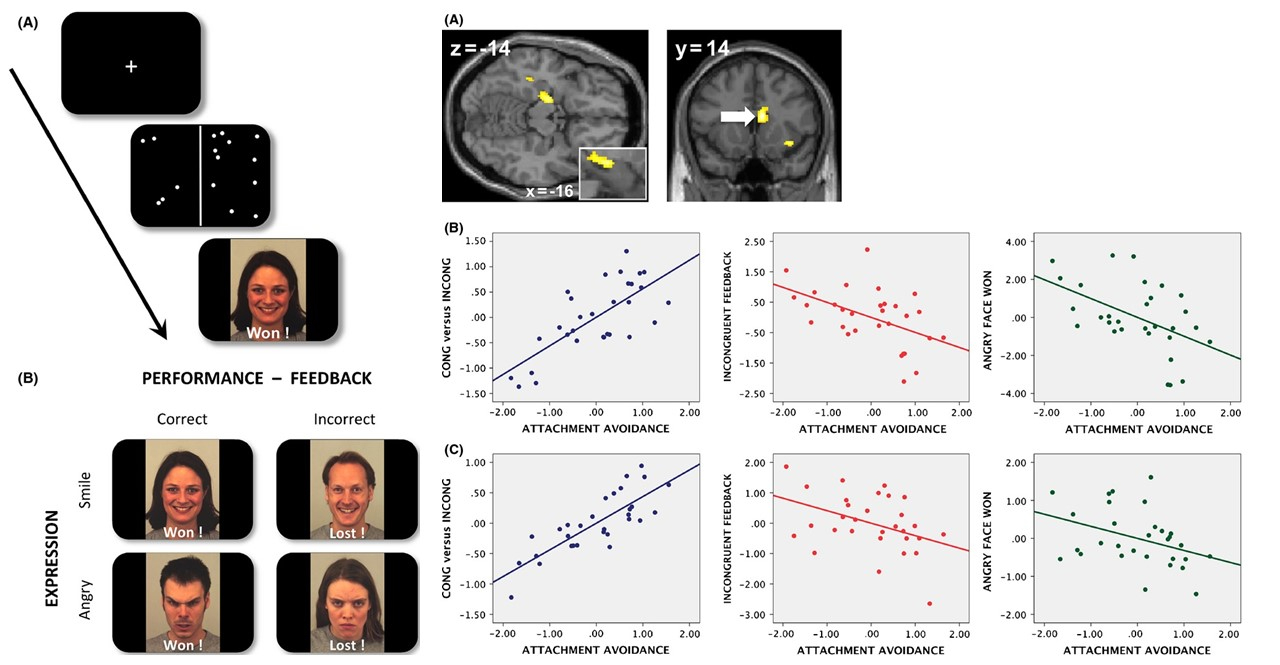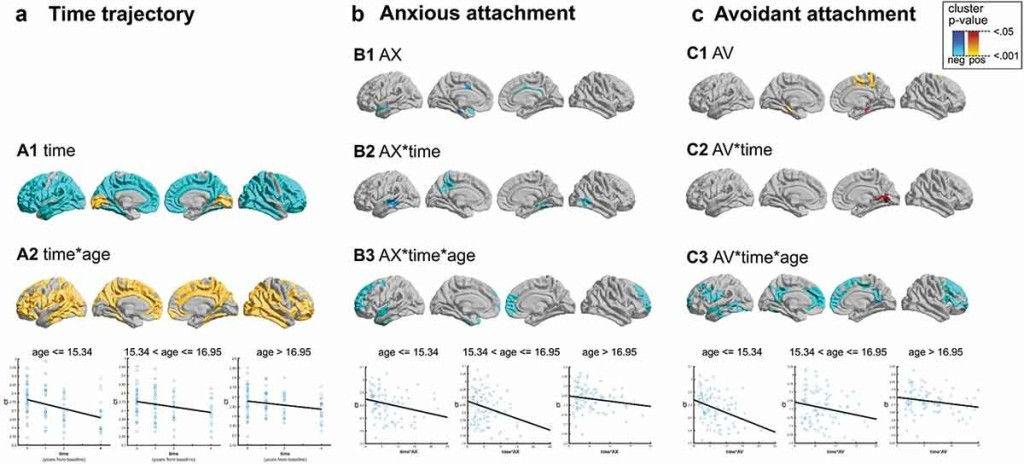
The Neural Substrates of Attachment in Adolescence
General Aim
Adolescence is a crucial developmental period not only marked by important changes in brain anatomy and physiology, but also in a person’s attachment settings. Whereas in early life, attachment figures are mostly parents and other close family members, adolescence is characterised by the emergence of additional attachment relationships outside the family context (including friends, peers, and romantic partners). It therefore appears important to investigate the neural basis of attachment during adolescence to better understand the underlying brain mechanisms as well as possible developmental trajectories. The importance of deriving more knowledge on the biological and brain basis of attachment in adolescence is underscored by the fact that the onset of most mental health problems occurs in this developmental period, and that problems with relationships constitute key contributors in the emergence of mental health and social emotional problems.
To our knowledge, only a very limited amount of social neuroscience evidence is available from adolescent participants. This is due to so far available studies usually focusing on adult samples (e.g., romantic partners or parent-child relationships). More research in adolescents therefore is crucially needed.
Below, two of SoNeAt Lab’s fMRI studies in adolescents aged 12 to 19 years using a social feedback processing and a mental state attribution task and the thereby obtained results are described first.
New data on patterns of brain anatomy as a function of individual differences in attachment in adolescents aged 12 to 19 years, also from a longitudinal perspective, is presented subsequently.
We hope that these findings can serve as a starting point for future investigations.
fMRI Study 1: Social Feedback Processing
In a first fMRI study of this kind, we looked at brain activations to congruent versus incongruent social feedback processing in 33 healthy adolescents (aged 12 to 19) as a function of their age, sex, and attachment style. The corresponding paper is published and is freely available here.

Our results suggest that attachment avoidance appears to influence brain activity during social feedback processing in the opposite direction of observed developmental trajectories across the entire sample. In other words, whereas increasing age seemed to be associated with a tendency to more strongly process incongruent social feedback, attachment avoidance appeared to show an inverse activation pattern – that is, a stronger focus on congruent social feedback. Our findings therefore suggest that attachment avoidance may incur less mature processing of social feedback during adolescence, because it may preclude the usually observed “opening up” to social information – particularly if signalling a conflict – over the course of adolescent development.
What is concerning attachment anxiety, observed effects were comparable with activation patterns related to age – that is, increased brain activity during incongruent social feedback processing in older adolescents. These findings therefore suggest that attachment anxiety may be associated with a stronger focus on incongruent social feedback processing representing social conflict. This pattern appears more adaptive than the pattern observed for attachment avoidance. It remains unclear, however, to which degree an increased neural sensitivity to social conflict represents an adaptive response to the environment. This particularly pertains to the question of where a possible threshold for the emergence of social emotional problems and mental health issues may be located.
Some implications of the above described findings are also discussed in my blog post on Attachment Style and Brain Activity in Adolescents.
fMRI Study 2: Mental State Attribution
In a second fMRI study, we investigated the neural basis of self- versus other-representation in 44 healthy adolescents (aged 12 to 19) as a function of their attachment-derived internal self- and other-working models (IWMs). Attachment theory suggests that through IWMs, attachment security and insecurity is associated with distinct representations of the self and others. Attachment security is usually characterized by positive self- and other-models. In turn, attachment avoidance is linked to an overly positive self- but a negative other-view, whereas attachment anxiety is linked to a more ambivalent self- and other representation. However, how such altered self- and other-views associated with attachment insecurity relate to brain activity during social emotional processing remains largely unknown. The corresponding paper is published and freely available here.

Our data revealed that participants with a more negative attachment-derived self-model (i.e. higher attachment anxiety) showed increased brain activity during positive and negative adjective evaluation regarding the self, but decreased brain activity during negative adjective evaluation regarding a close other. These patterns were observed in bilateral amygdala/parahippocampus, bilateral anterior temporal pole/anterior superior temporal gyrus, and left dorsolateral prefrontal cortex. Our findings suggest that a low positivity of the self-concept characteristic for the attachment anxiety dimension may influence neural information processing, but in opposite directions when it comes to self- versus (close) other-representations. We discuss our results in the framework of attachment theory and regarding their implication especially for adolescent social-emotional development and social integration.
MRI Study: Longitudinal Cortical Thickness and Subcortical Volume During Adolescence and Young Adulthood
In an anatomical brain analysis, cortical thickness (CT) and subcortical volume (SV) trajectories in were assessed in 95 typically developing adolescents (initial ages 12-19) at one to four visits over the course of four years. CT and SV were then related to their self-reported attachment style at study baseline. The corresponding paper is published online in the journal Attachment & Human Development and is freely available here.
Our results revealed normative neurodevelopmental trajectories of predominantly decreasing cortical thickness (CT), particularly at younger ages, and patterns of both decreasing and increasing subcortical volume (SV) with ageing. Self-reported anxious and avoidant attachment style were associated with steeper CT decreases in prefrontal cortical and cortical midline structures as well as anterior temporal cortex, particularly in participants younger at study baseline.

Regarding SV, preliminary differential associations were observed between developmental trajectories and attachment dimensions.

Our study suggests that interindividual differences in attachment contribute to shaping neurodevelopmental trajectories for several cortical and subcortical structures during adolescence and young adulthood.